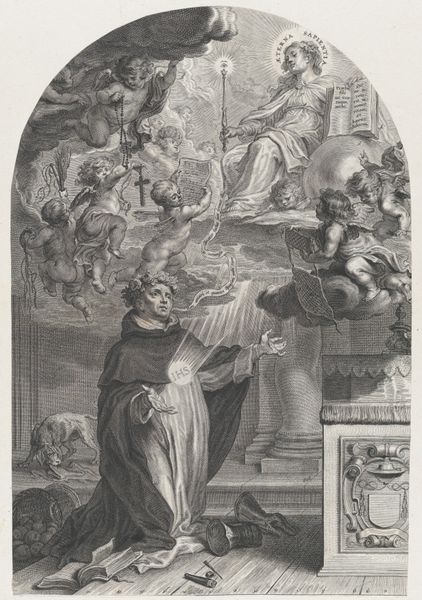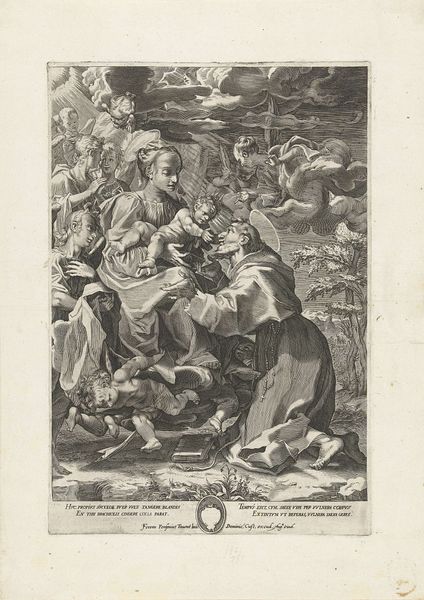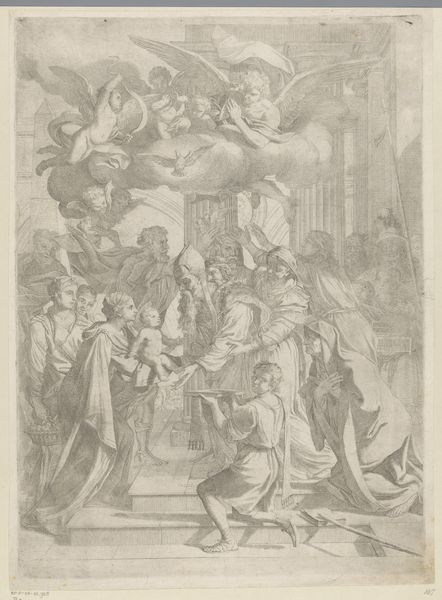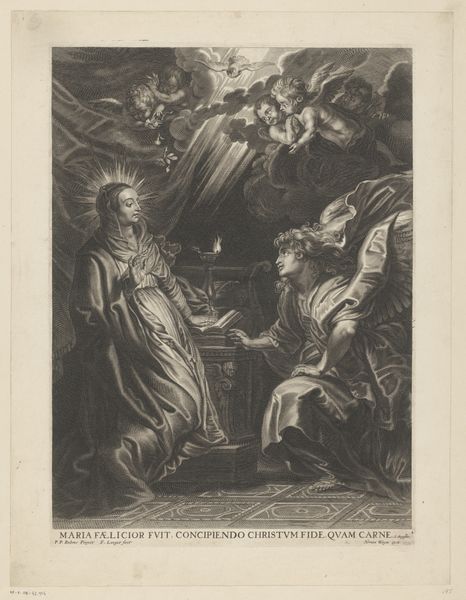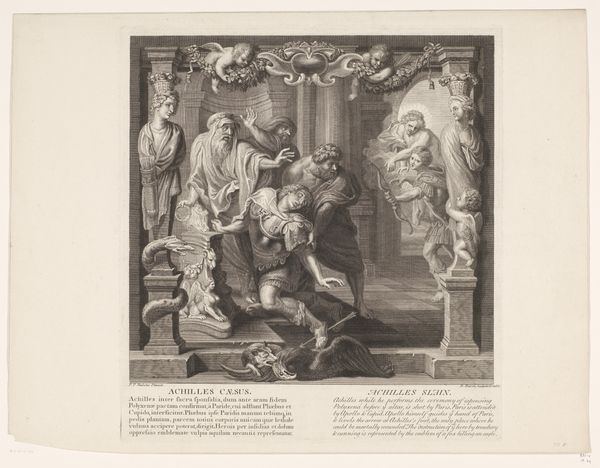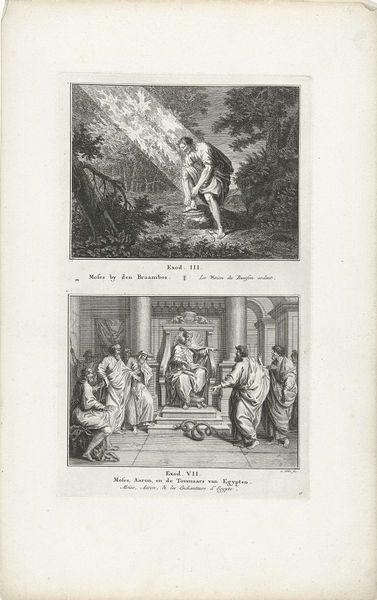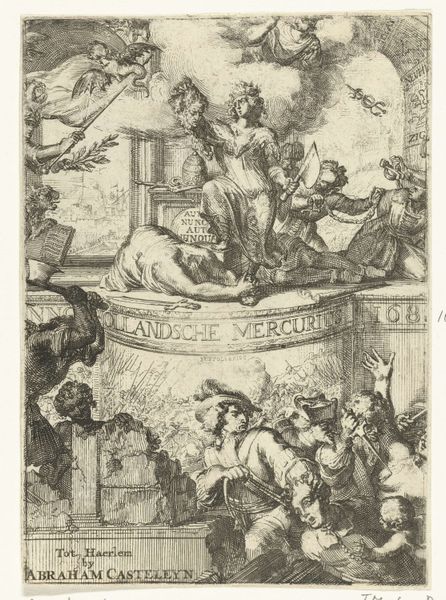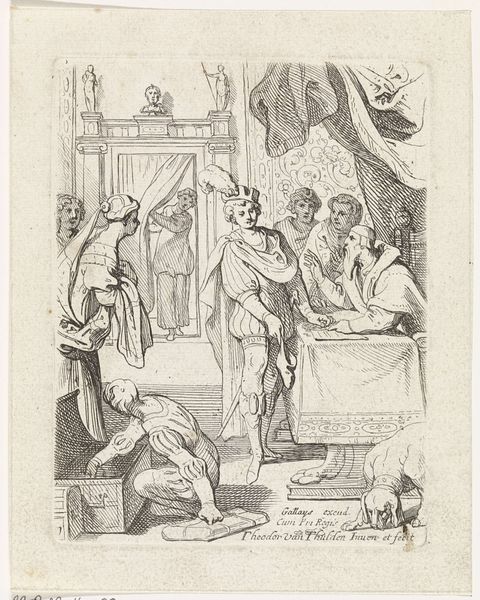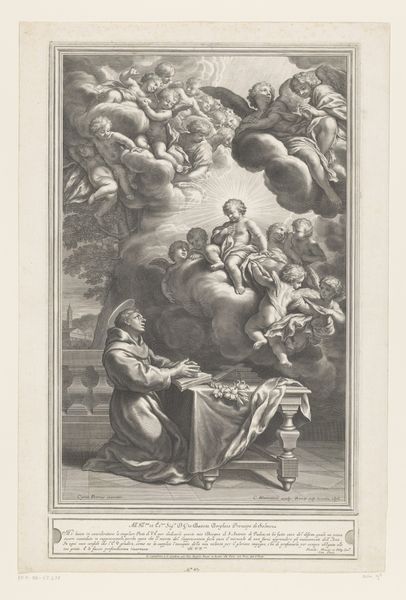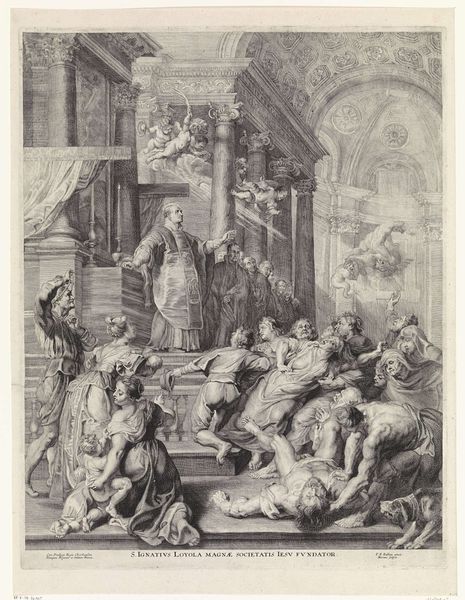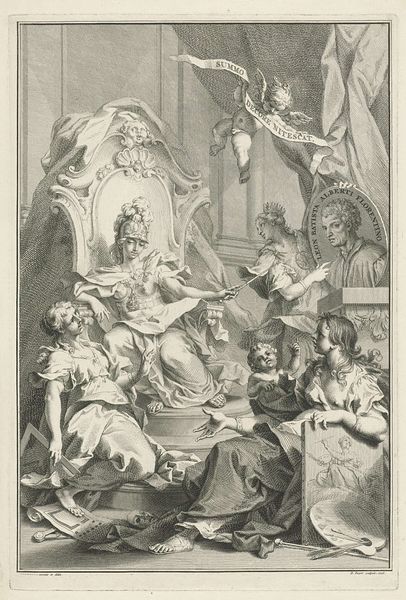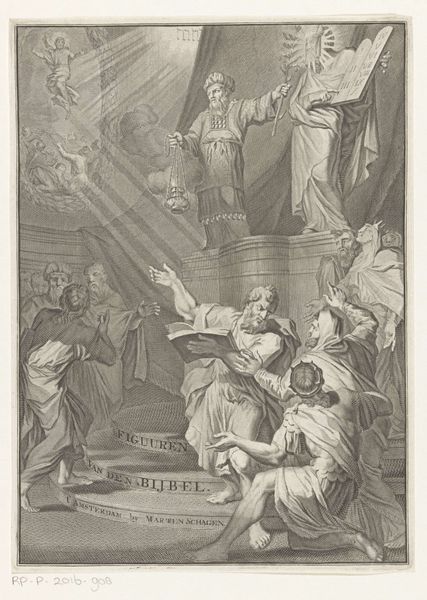
Geknielde dominicaan voor een altaar, waarschijnlijk Hendrik Seuse 1620 - 1666
0:00
0:00
philipfruytiers
Rijksmuseum
engraving
#
portrait
#
baroque
#
old engraving style
#
figuration
#
line
#
history-painting
#
engraving
Dimensions: height 550 mm, width 365 mm
Copyright: Rijks Museum: Open Domain
Editor: This engraving, "Kneeling Dominican Before an Altar, Probably Hendrik Seuse," made sometime between 1620 and 1666 by Philip Fruytiers, has such an intense and devotional feel. What historical narratives do you see interwoven within this work? Curator: This piece gives us insight into the religious and intellectual landscape of the Baroque era and allows us to consider the dynamics of power and knowledge within religious institutions. How does this image, with its depiction of a kneeling figure in subservience to divine wisdom, reflect or challenge notions of agency and self-determination? Editor: It does present a complex dynamic. The figure is surrendering, yet there's a sense of purpose and devotion. Does the emphasis on humility speak to a specific theological doctrine or perhaps even a response to the social upheavals of the time? Curator: Precisely. Consider how the Baroque period followed the Reformation, leading to the Counter-Reformation, a Catholic resurgence. Images like this were often employed to reassert Catholic authority and to emphasize the importance of obedience and piety. The performative aspect of devotion, rendered in meticulous detail through the engraving technique, can be read as a powerful statement. It suggests how social and gender hierarchies influence religious devotion, shaping one's relationship with spirituality. Editor: That connection between social hierarchy and personal devotion makes so much sense here! Curator: Indeed! This engraving serves as a lens through which we can critically examine the role of art in perpetuating or questioning dominant narratives about identity, knowledge, and faith during a transformative period in European history. What lasting impact do such portrayals have on shaping the role that faith and servitude may play within individuals' lived experience? Editor: Thanks for that. I definitely have much to consider!
Comments
No comments
Be the first to comment and join the conversation on the ultimate creative platform.
